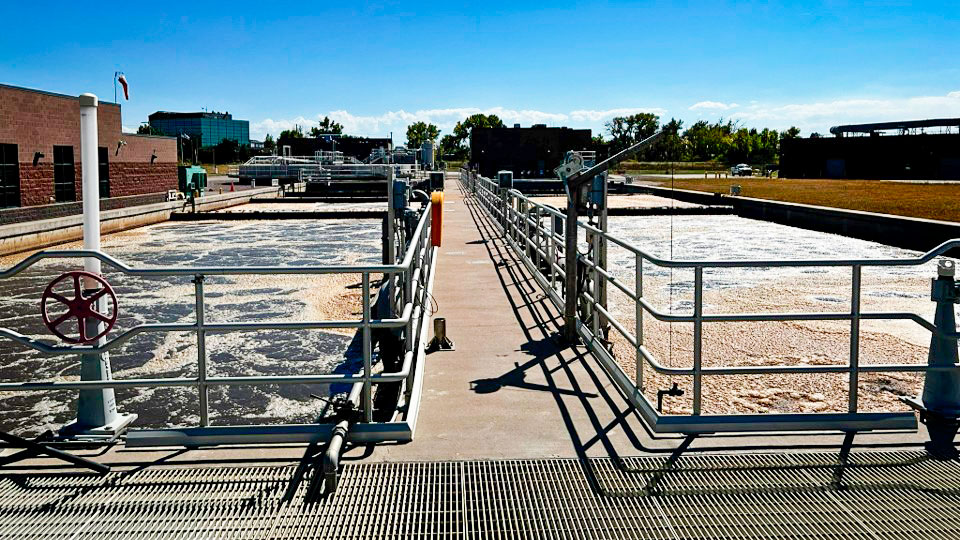Water district puts bugs to work

The part of the wastewater treatment and purification process where the “bugs” work, the biological nutrient removal step, takes place in large outdoor aeration basins.
A fascinating, multi-step process converts used water from homes, that is wastewater, into clean water to return to the environment. The Parker Water and Sanitation District (PWSD) has two wastewater treatment and purification facilities that perform this service for its customers in Parker and The Canyons neighborhood in Castle Pines.
“We treat and discharge around 4.7 million gallons per day of flow through our processes,” stated Ben Emerson, PWSD Wastewater and Collections Manager. “It’s all one water. We don’t make water here.”
The process begins with bar screening, which filters out large pieces of debris, including some odd items sometimes. “The strangest thing we have found was a hard hat and a six-foot piece of four-by-four [wood]. We have also seen underwear, footballs and toys,” Emerson stated. If not removed, this debris could damage pumps and impede water flow.
In the next step, heavier grit falls to the bottom of the grit chamber for removal while the water and organic material continue on. The primary clarifier is the next step, where solids sink to the bottom of an outdoor tank. From there, they are pumped to a sludge digester or processing area, to be dried and hauled off.
Contaminants that did not settle out flow next to aeration basins for biological nutrient removal. This is where the “bugs” come in. While they are nicknamed bugs, they are in fact microorganisms. The bugs clean contaminants from the water through their normal metabolic processes. The highly concentrated microorganisms reside in differing environments within the aeration basins: anaerobic – where both free and bound oxygen are typically absent; anoxic – where free oxygen is absent but bound oxygen can be present, and aerobic – where oxygen is plentiful.
One of the key parts of biological nutrient removal is the extraction of nitrogen compounds, which can be harmful if released into natural water bodies. In aerobic zones, the bugs convert the ammonia in the wastewater to nitrite then to nitrate, a process called nitrification. In anoxic zones, the bugs convert nitrate to nitrogen gas, a process called denitrification. The nitrogen gas is then released harmlessly into the air.
Leaving the aeration basins, the flow moves into a secondary clarifier. There, activated sludge – consisting mostly of active bacteria plus very small solids – sinks to the bottom for removal. Some of the activated sludge is returned to the aeration basins to help with the process there.
In the remaining steps, chemicals are added to thicken contaminants into large particles that settle out. Fine particles that do not settle pass through filtration. The water is disinfected using ultraviolet light. The flow has been tested throughout to ensure the process is optimal, and final testing is done to make sure the outgoing effluent meets permit specifications. Finally, the clean water can rejoin the ecosystem via creek or reservoir, completing the wastewater treatment cycle.
For more information, visit pwsd.org, hover over “Customer Resources” and click on “Wastewater Treatment Process” from the list.

Stalked ciliates (below) and rotifers (above) are just a couple of the many bugs that help clean wastewater. Stalked ciliates look something like palm trees. Cilia around rotifers’ mouths help them take in nutrients and, when in motion, look like whirling gears. Rotifers are sometimes called wheel animals.

By Susan Helton; photos courtesy of PWSD